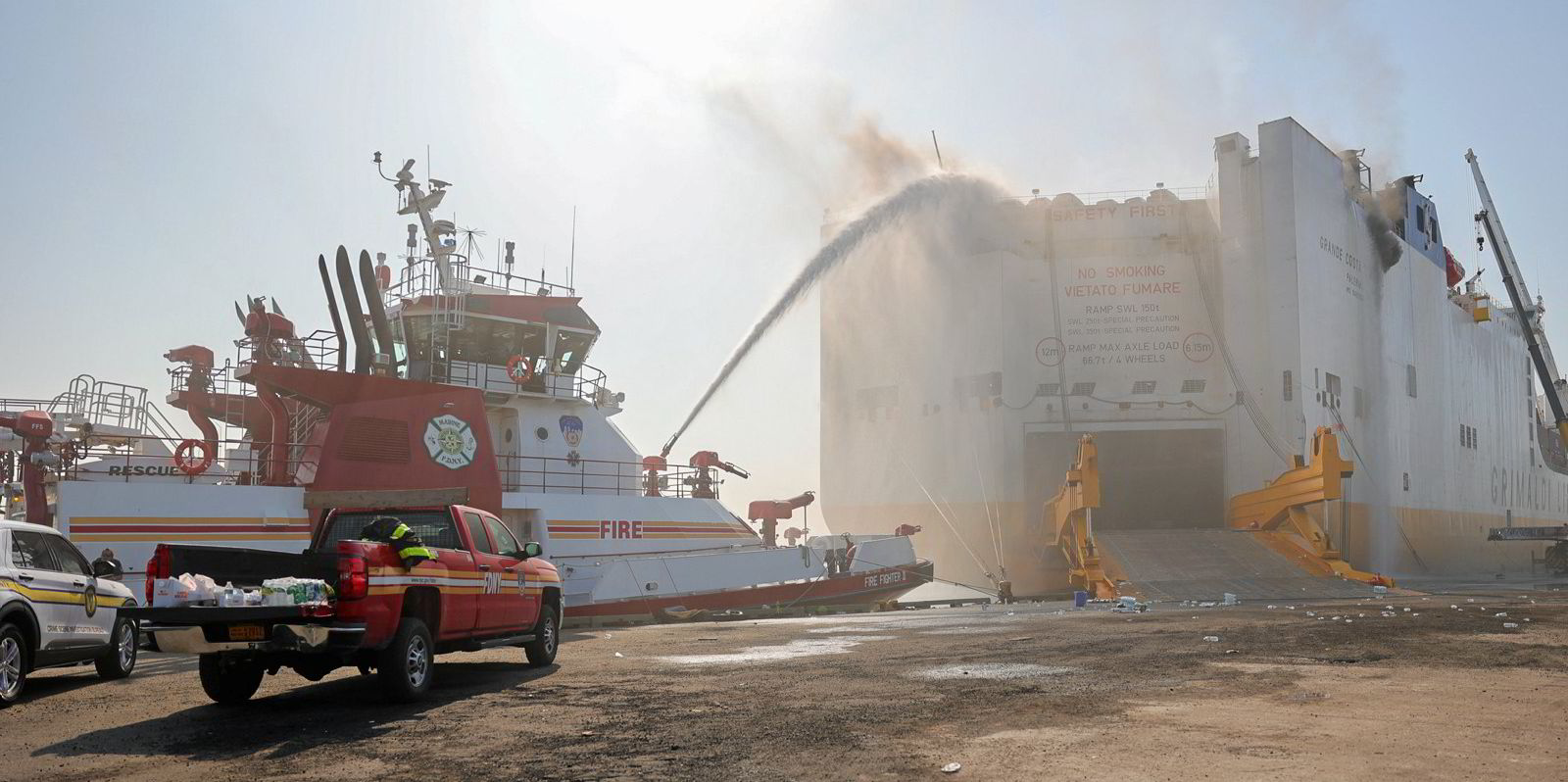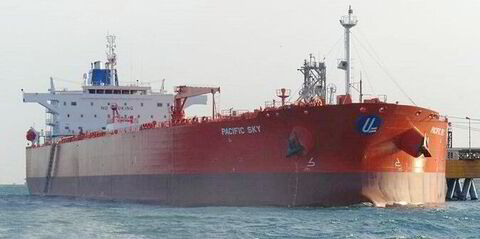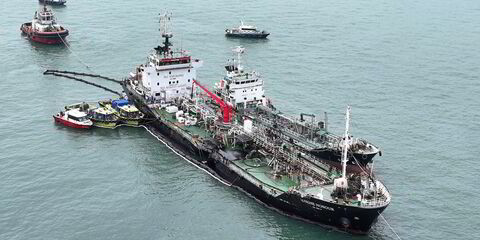The fire that erupted aboard a Grimaldi Group-operated ro-ro vessel on Wednesday while berthed at Port Newark has finally been extinguished, the US Coast Guard said on Tuesday.
The news came days after the fire started about 9:30pm local time on Wednesday (0130 GMT Thursday) on Grimaldi Deep Sea’s 3,950-lane-metre Grande Costa d’Avorio (built in 2011), as stevedores and crew members were completing loading of 1,200 automobiles on the ship.
The fire, which resulted in the death of two Newark firefighters and injuries to six firefighting personnel, continued to burn on the ship’s upper decks for days because intense heat limited firefighter access to it.
Extinguishing the fire required support from the US Coast Guard, the New York Fire Department, the Port Authority of New York and New Jersey, Gallagher Marine Systems and Donjon-Smit salvage team, US Coast Guard New York sector commander Captain Zeita Merchant said.
“At this time, those concerted efforts have gotten us to a place this morning where we can officially declare the fire is out,” she said at about 11am local time on Thursday during a press conference.
“While this is a huge milestone and something that we can celebrate, we must not lose sight of the fact that this is merely the first step of a long process as we now need to consider the salvage and transfer of the vessel, a process that can be hazardous and complex as well.
“Additionally, and more importantly, we are transitioning to a phase of determining the cause of the fire.”

A formal investigation will be conducted by the Coast Guard in tandem with federal investigators that include the National Traffic and Safety Board, the Bureau of Alcohol, Tobacco and Firearms, and the Department of Justice, Merchant said.
State and local officials such as the New Jersey state fire marshall and state police and Newark fire department will also be involved in the probe.
“We are committed to implementing lessons learned so we do not repeat the tragedy experienced here,” she said.
The investigation and salvage operation will begin on Wednesday, she said.
“Those salvage operations can go between one to two months, but it really depends on the sequencing of those events and resources,” she said.
“One of the things that we are committed to is making sure that we are transparent in that process, as much as we can give about the salvage process.”
Before arriving in Port Newark, the ship had discharged electric vehicles and other new automobiles and loaded 157 containers in the Port of Baltimore, port authority director Beth Rooney said.
Its next scheduled port of call after Port Newark was the Port of Providence, Rhode Island, where it was scheduled to pick up used vehicles before sailing to West Africa.
“So what you had inside the hull of the ship where the fire we believe originally started were 1,200 automobiles on nine decks,” she said.
“The superstructure that you’re looking at of the ship is essentially a parking garage with ramps at levels in which cars are parked. So what we had burning were components and parts of cars.”
She said the vehicles’ fuel tanks were empty and their batteries were disconnected before loading. The ship’s manifest showed the vessel had no lithium-ion batteries or electric vehicles onboard, she said.
The move towards electric cars and the increasing international trade in lithium-ion batteries have been cited as contributing factors to numerous fires on car carriers.(Copyright)
Read more
- Grimaldi ro-ro fire may burn for days, official says
- Grimaldi ro-ro catches fire off New Jersey, resulting in death of two firefighters
- Grimaldi boosts Greek holdings with second state port buy
- Grimaldi Group exercises options for two more car carriers
- Uncertainty over fuels risks green targets, ICS warns in new barometer report




